An import from Canada (Rambling Rats - Bobbi Jo Zammit) in 2016 brought (among others) a potentially distinctive new variety caused by a dominant gene, silvermane, to the UK. This new gene affects the coat, causing the ends (approximately 3/4 of the length) of the hairs to be silver (probably in fact translucent in structure), with more and more hairs affected as the rat ages, meaning that the adults can look quite striking with pale bodies and darker muzzles and ears, similar to an argente rabbit. The coat is also much silkier than normal, so feels gorgeous even on an adult buck in his prime. A silvermane rat can be of any colour, but the effect looks most dramatic on dark varieties. I am keen to help establish the variety by developing a new line here employing a non-cull approach.
Background
The silvermane gene mutation first appeared in 2012 amongst rats belonging to a feeder breeder, and since then more have been bred and passed on to further breeders in America and Canada, and more recently, Europe. Understandably, given their roots, these rats do not yet have particularly good genes in general, and the imported rats will not bring just the silvermane gene with them, but also various health, temperament, and type problems which will need to be overcome. There are several breeders in the UK who will be working independently to develop their own silvermane lines.
Strategy
Initial plan: I will be improving them by crossing with the most robust rats from my own lines, probably creating mostly chocolate based silvermanes in self and agouti, as well no doubt as some who are american mink based. Since silvermane is dominant, I will be able to dilute the other imported genes by a factor of two with each subsequent generation by mating silvermanes with rats from my standard Zephyr lines each time. Also, by using silvermane bucks wherever possible, I can postpone the mating until they are old enough to have exhibited any hormonal issues, thus allowing me to select the best bucks to use. Once I am reasonably happy with the quality of the kittens being produced, I will test mate by inbreeding to reveal what recessive genes have been carried through. If the test litter proves satisfactory, then I will move on to my normal method of line breeding, and be able to focus on improving the silvermane coat.
Revised plan: Following the first litter, given the relatively low expression in most of the silvermanes, and because there were no immediate significant health concerns, an inbreed was planned to discover whether better expression could be expected from homozygous silvermanes. It would seem that stronger expression is more likely, so to balance this with increasing their 'zephyrness', future litters will be divided between silvermane inbreeds, and matings with a standard Zephyr. I'm currently going to aim for bases of agouti, american cinnamon, and chocolate.
2019: Now that the temperament is settled, most of my plans are within the silvermane lane, with just an occasional outcross. I am aiming now for agouti, chocolate agouti, and american cinnamon bases, as I prefer the more even effect that an agouti base gives to the coat, the selfs have a tendency to look a bit patchy - but this may change if I can consistently produce well silvered rats.
Homing
Initial plan: The kittens from this development line will not be available to new pet homes until and unless they reach acceptable levels of both health and temperament, which may take several years. In the meantime, I will probably be keeping all of the silvermane buck kittens, and will be relying on the much appreciated help of experienced friends who are willing to deal with the potential issues that might arise to take the other kittens.
Revised plan: The first litter have largely proved to be delightful pets, with the only issues being that 2 does became over dominant with cagemates and were spayed, this may possibly have been due to the lack of a strong alpha in the group. Therefore, kittens from future litters which are crossed with standard Zephyrs will be available to a wider set of homes, although still not to brand new owners. Kittens from inbred silvermane litters will still be restricted to the most experienced homes.
2019: kittens are now available to my full waiting list.
Names
In order to differentiate this development line from my other rats, I shall be naming them after artists rather than songs. The first generation (F1) will be from the 1950s, the second (F2) from the 1960s, and so on.
Foundation rat
The imported rats arrived in the UK at the start of June 2016, and after fathering some litters for another breeder, one of the bucks, Mr. Bungle, came to live here at the start of September. He is an agouti based silvermane dumbo (although it is hard to see the silvermane effect visually), his colour is unknown and could be carrying any number of other genes (some unusual kittens have appeared in his other UK litters). The imported rats have come from Canada with just the coat on their backs: no name, no date of birth, no family tree. I estimated Bungle's age to be roughly 18 months on arrival, but have no clues to what genes he might be carrying.
Mid September - I believe Bungle has a sweet core, he shows some interest when I approach him, but is still shy and he doesn't like being handled. So far he has shown no sign of wanting to chew the plastic base of the cage he is currently in. He hasn't ventured into the hammock (unlike another imported rat who had a brief stopover here), so may not be the sharpest in terms of brain power or bravery. His left eye is shrivelled (a common problem where he came from), and I doubt that he can see much if anything through it. He has been tried with other bucks but will not accept them (a side effect of having lived his whole life as a stud buck), and loses condition rapidly when kept with does, but once I have some confirmed silvermane kittens, Bungle will be neutered and introduced to some companions.
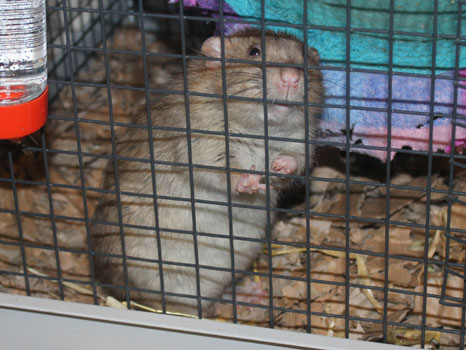 |
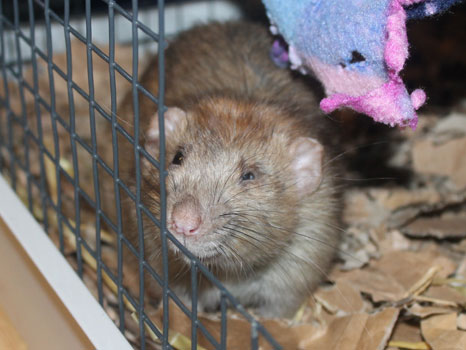 |
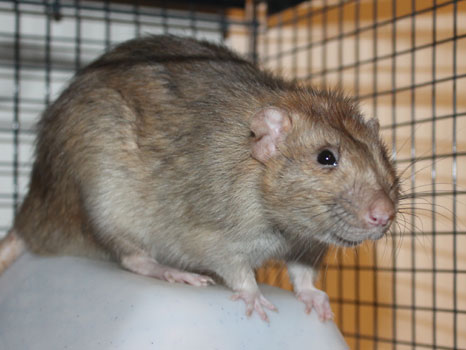 |
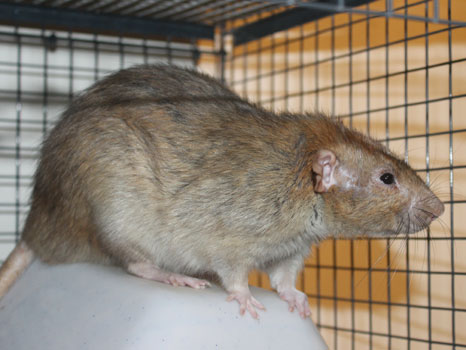 |
Early October - having moved into half an explorer cage, after a few weeks of getting used to his new surroundings I introduced Bungle to the concept of cuddles, and now, once I have scooped him up, he relaxes and enjoys strokes and head massages causing him to brux and lick. He doesn't yet approach me or ask to come out, but doesn't always move away either. At this stage, caution regarding the temperament of his offspring is still advisable, but it won't surprise me if they turn out to have perfectly acceptable pet temperaments. He has developed a slight mask since arriving, and his coat has a particularly silky feel.
Mid October - I have introduced Bungle to a couple of elderly spayed does, and they have settled happily together.
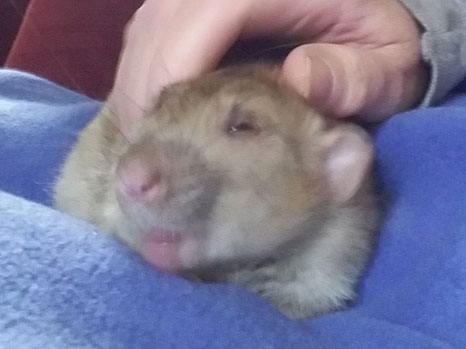 |
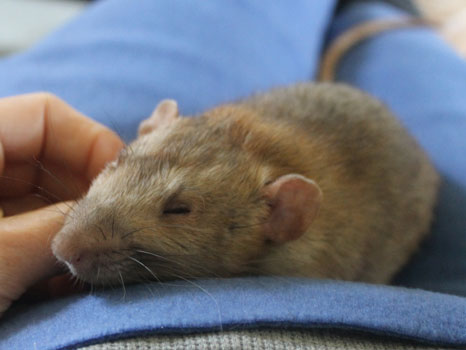 |
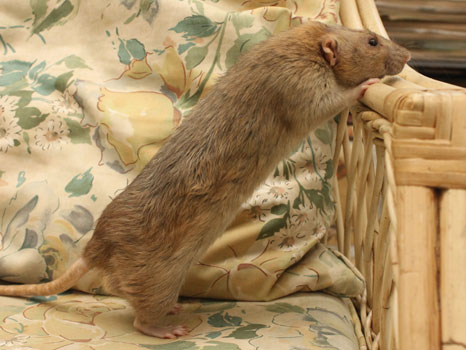 |
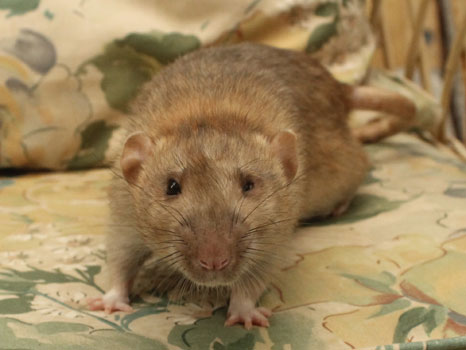 |
Early January 2017 - Bungle's sons were introduced to his group without any issues.
March 2017 - Bungle remains fit and well, although an attempted mating has failed to result in a litter, so he may be losing fertility. He is now a fully integrated member of his group, and will come to the cage front of his own accord to greet me.
October 5th 2017 - Mr. Bungle sadly passed away today, he'd had HLD for a while but was managing well, he died peacefully in the cage. We'd recently discovered his date of birth was 21/07/15, so he made it to 26 months.
Matings
September 2016 - Zephyr Foxy Lady (standard Zephyr, chocolate american mink) was mated with Bungle.
14 kittens - 7 silvermanes, 6 selfs (so Bungle is carrying self), 2 black and 3 agouti (so Bungle is not expressing UK chocolate or american mink).
The silvermane kittens exhibited a pale point on their snout by two weeks of age, with the agouti buck's being the most prominent.
By the start of the kitten moult, the agouti buck's mask was very clear, but the selfs began silvering from their bellies up. Their coats are now very silky, easily distinguished by touch alone, regardless of how much silvering they have developed.
I prefer the effect on standard agouti, or on chocolate self. I suspect that Bungle is expressing a dominant chocolate gene, but later matings will make this clear. Some of the kittens have a brighter coat like Bungle does, probably due to a RED type gene being carried (aka 'dirty orange'), but this mutes the impact of the silvermane coat in terms of the facial mask.
Full picture history can be found on the litter page here, but these are the agouti and chocolate bucks at 7 weeks:
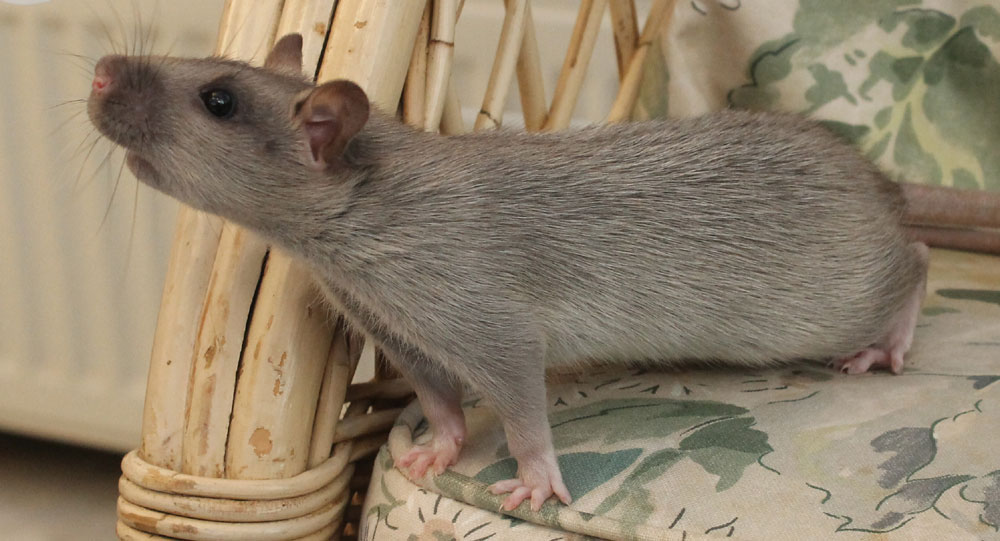 |
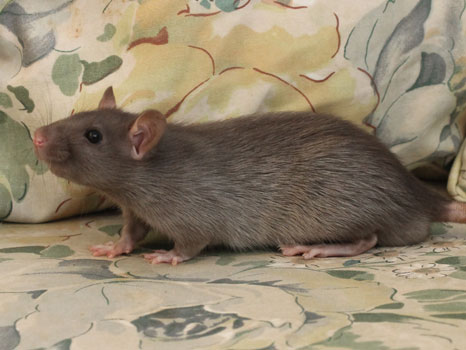 |
May 2017 - a mating between two silvermane kittens from Foxy's litter to investigate the relative degree of expression in homozygous silvermane: Zephyr Eartha Kitt (F1, black silvermane) was mated with Zephyr Elvis Presley (F1, agouti silvermane).
6 kittens - 3 silvermanes, all fully silvered as soon as their coats emerged, 1 american mink doe and 2 american cinnamons (buck has a stronger mask than the doe). I'm quite keen on the american cinnamon silvermane, even though the mask is not very distinct.
Full picture history can be found on the litter page here, but this is the american cinnamon silvermane buck (Paul McCartney, aka Macca) at 12 weeks:
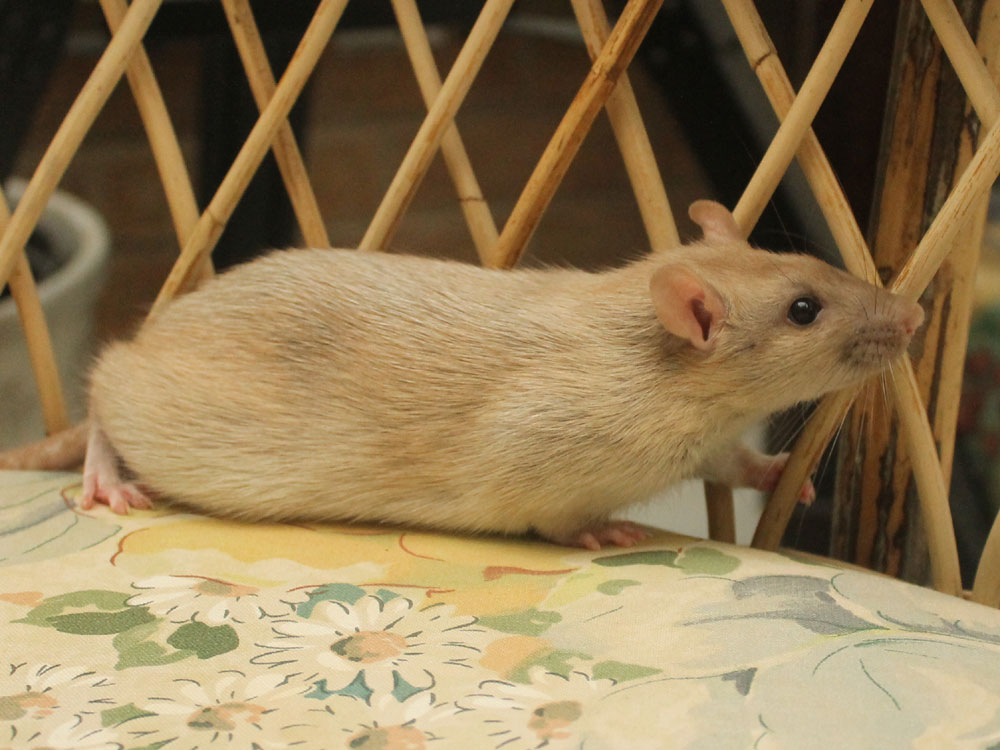 |
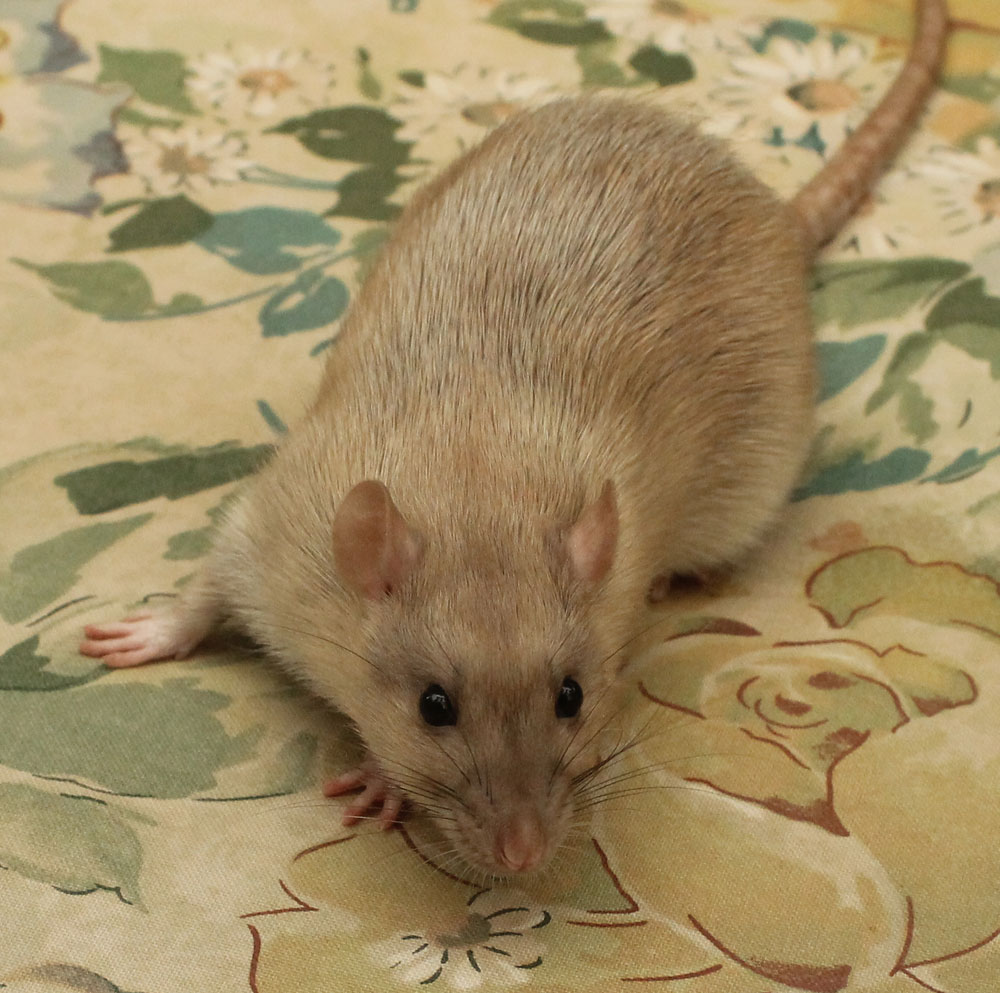 |
July 2017 - a mating between Zephyr Carrie Ann (standard Zephyr, american mink dumbo carrying RED but probably not carrying chocolate) and Zephyr Bo Diddley (F1, chocolate irish silvermane) to test the chocolate gene and for silvermane selfs.
10 kittens - 5 silvermanes, none distinct as the coats emerged: an american mink buck and a chocolate doe who became very nicely silvered after their moult (they have gone to some breeders in Sweden), a black buck, and two chocolate does were not so well silvered. I chose to keep the worst because she has the best temperament and I intend to mate her with another silvermane. There were no chocolate looking non silvermane kittens, but one of the silvermanes looked more like a black than the others who all look chocolate, so for now I'm hoping that my chocolate silvermane keeper is a dominant chocolate - I plan to mate her with another chocolate as a further test.
Full picture history can be found on the litter page here, but this is my keeper (Cilla Black) and her mink silvermane brother, aged 8 weeks:
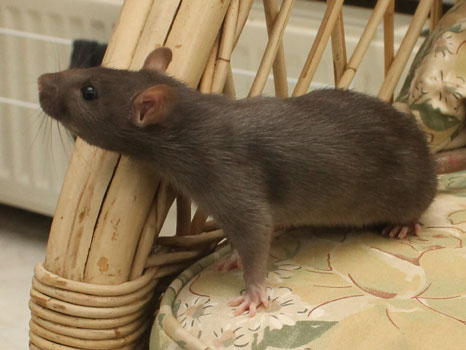 |
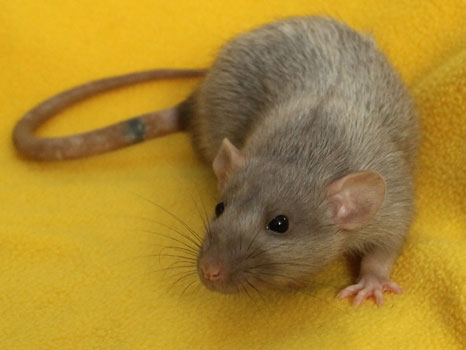 |
January 2018 - a test mating between Zephyr Bo Diddley (F1, chocolate irish silvermane) and Rivendell Elleth (black, known to not carry UK chocolate) to test the chocolate gene more rigorously.
16 kittens - 11 silvermanes, none distinct as the coats emerged: several became quite nicely silvered after their kitten moult (two will be exported to a breeder in France), 11 are clearly chocolate rather than black like the others proving that Diddley and they are dominant chocolates. One chocolate silvermane buck is also a satin, this was identifiable as a young kitten but looks the same as other silvermanes in adult coat. I kept the satin, a chocolate silvermane doe, and a buck and doe in non silvermane dominant chocolate for future test matings using this gene.
Elleth had a second litter (for a different line) which revealed that she does carry UK chocolate after all, so since I can't be sure which sort of chocolate any of the kittens from this litter are, I won't be looking into dominant chocolate after all.
Full picture history can be found on the litter page here, but this is the satin silvermane (Donovan), aged 10 days and 10 weeks:
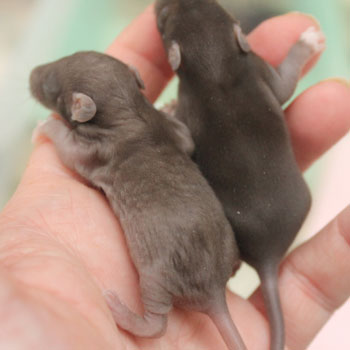 |
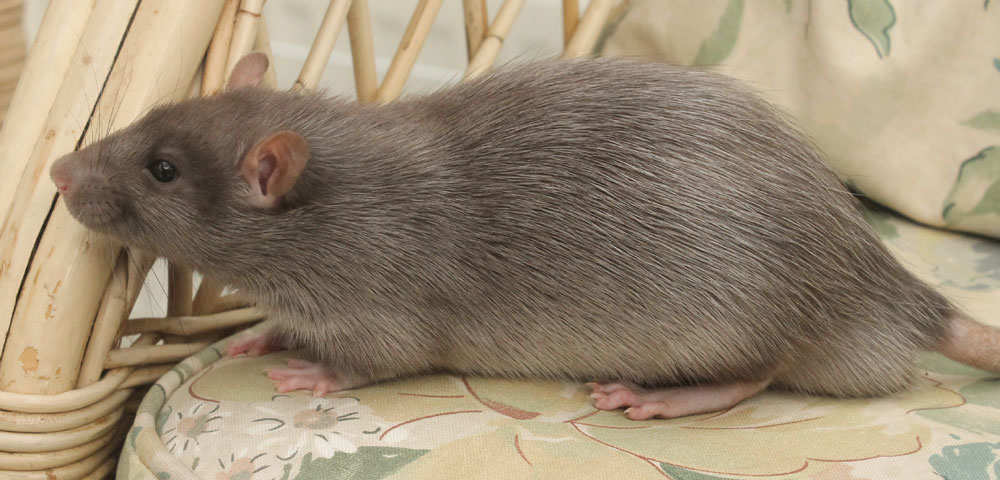 |
April 2018 - a mating between Zephyr Paul McCartney (F2, american cinnamon silvermane) and Zephyr Cilla Black (F2, chocolate silvermane).
10 kittens - 8 silvermanes (proving Macca is not a homozygous silvermane), only one was distinct as the coats emerged (and he unfortunately died at 3 weeks, cause unknown), but several more developed good silvering over the following weeks, and most were looking quite reasonable after their kitten moult. I kept a chocolate american cinnamon silvermane buck (quite red eyes), and a chocolate agouti silvermane doe.
Full picture history can be found on the litter page here, but this is my keeper buck (Noddy Holder), and a chocolate silvermane sister, at 8 weeks:
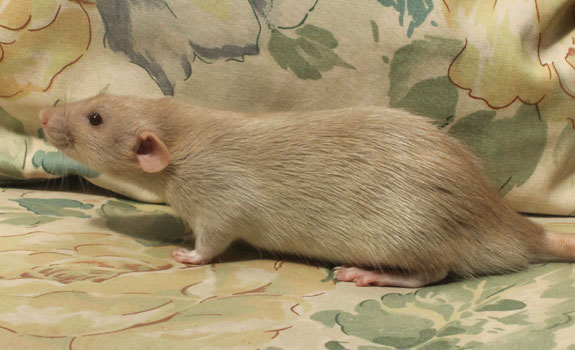 |
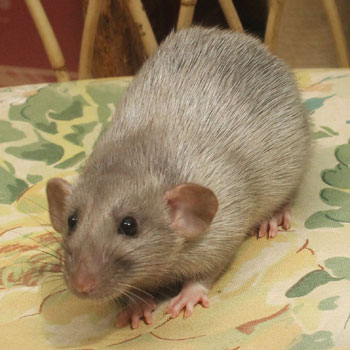 |
May 2018 - a mating at Nimbus Rats between Zephyr Yorke (F1, pale chocolate silvermane) and Nimbus Summer of Zephyr (pale american cinnamon from the Zephyr Havana line).
4 kittens - 3 silvermanes, most look nicely silvered but one in particular has remained very striking, Nimbus Mr. Brightside, a chocolate american cinnamon silvermane (possibly carrying buff as well) who I may use for a litter in 2019. This is him aged 7 months under the flash:
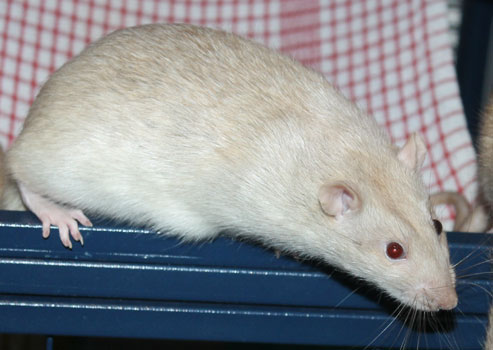 |
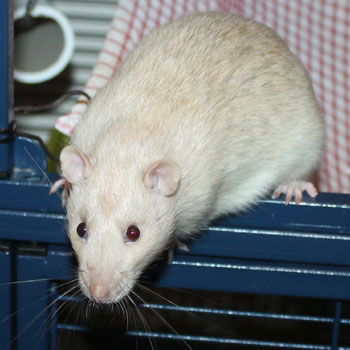 |
September 2018 - a mating between Zephyr Yorke (F1, pale chocolate silvermane, not owned by Zephyr) and Zephyr Cher (F2, chocolate silvermane).
11 kittens - 5 silvermanes, this time the most distinct silvermanes as the coats emerged became the least distinct after the kitten moult, and vice versa. I kept a chocolate silvermane buck, a chocolate doe, and a buck and doe who both had very pale milky tea coloured coats with ruby eyes, possibly double chocolate american minks, possibly self versions of Mr. Brightside. Unfortunately whilst this is an interesting colour, they both have very poor type and small eyes, and if it later proves to be connected to the colour then I will drop it.
Full picture history can be found on the litter page here, but these are my keeper bucks (Elton John and Marc Bolan), at 15 weeks:
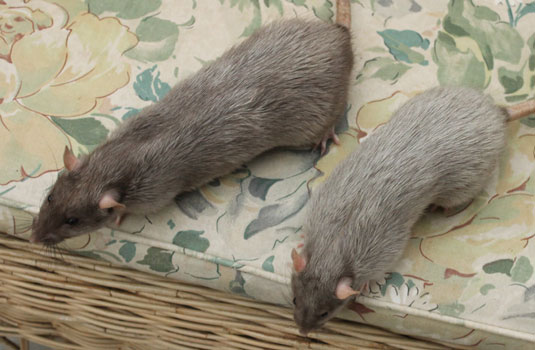 |
November 2018 - a mating between Zephyr Mushroom (F2, black silvermane, not owned by Zephyr) and Zephyr Kate Bush (F3, chocolate agouti silvermane).
6 kittens - 5 silvermanes. Very pleased to have two agouti silvermanes (a buck and a doe) in this litter as that was my aim (albeit not very silvered as kittens), but also intrigued by a mottled doe kitten (probably chocolate and buff) who may just be a genetic fluke (chimera or mosaic), so I'll be repeating this mating on the off chance that she's not.
Full picture history can be found on the litter page here, but this is the agouti silvermane buck at 6 weeks:
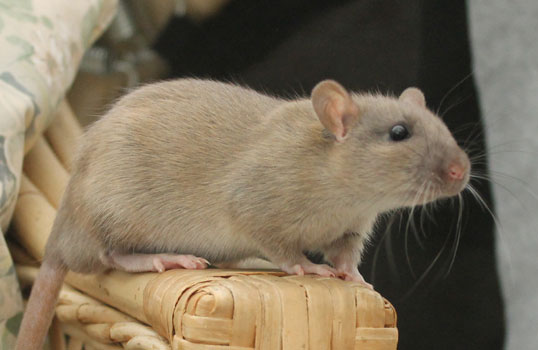 |
March 2019 - a repeat of the mating between Zephyr Mushroom (F2, black silvermane, not owned by Zephyr) and Zephyr Kate Bush (F3, chocolate agouti silvermane) in case another mottled kitten turns up.
7 kittens - 4 silvermanes. None mottled, but also, like last time, no buff, so the likelihood is that Freckles is a mosaic rather than a chimera.
Full picture history can be found on the litter page here, this is my american cinnamon silvermane buck keeper (Sting) at 8 weeks:
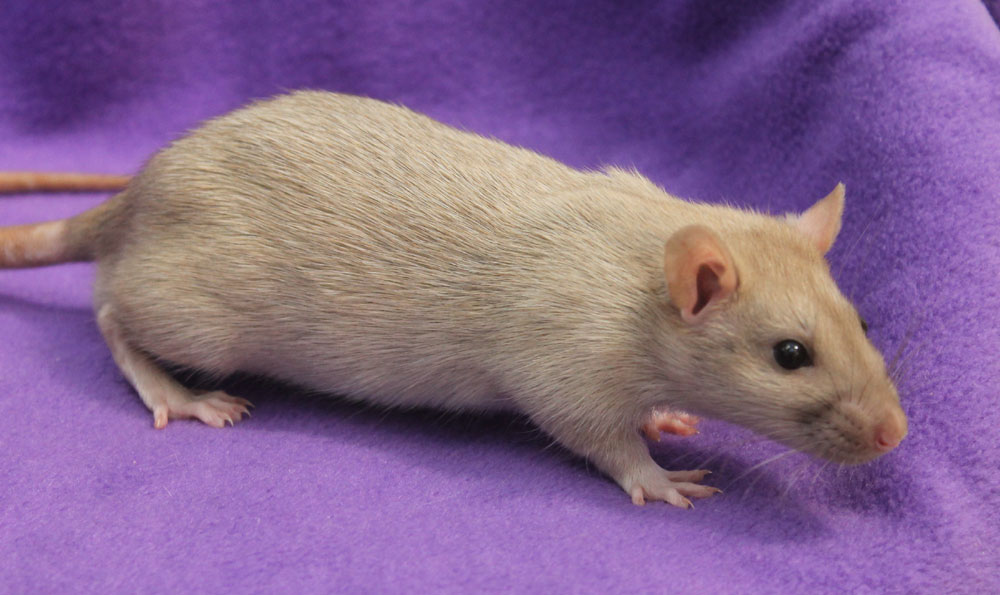 |
March 2019 - a mating between Zephyr Macca (F2, american cinnamon silvermane) and Zephyr Donna Summer (F3, chocolate).
15 kittens - 9 silvermanes. This litter included several very bright chocolate agouti silvermanes (possibly carrying RED), looking just like their half sister Kate Bush. I adore this variety, their dark whiskers and big black eyes contrast so well against their golden faces, so will now dedicate a silvermane strand to producing more of them. The whole litter is chocolate, and I'm deducing that Donna is in fact a homozygous dominant chocolate.
Full picture history can be found on the litter page here, here are a couple of my keepers at 8 weeks:
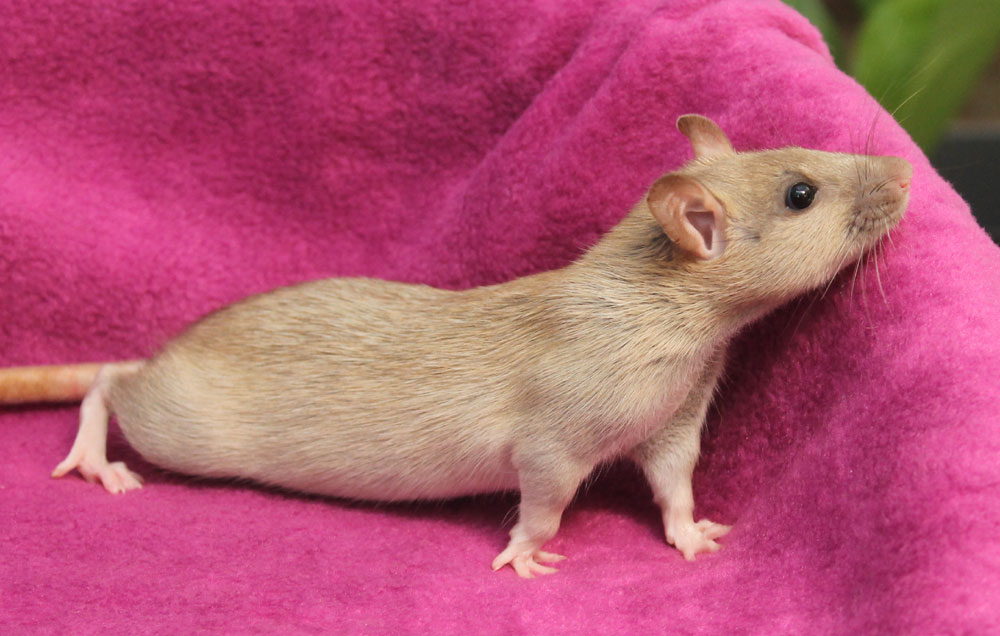 |
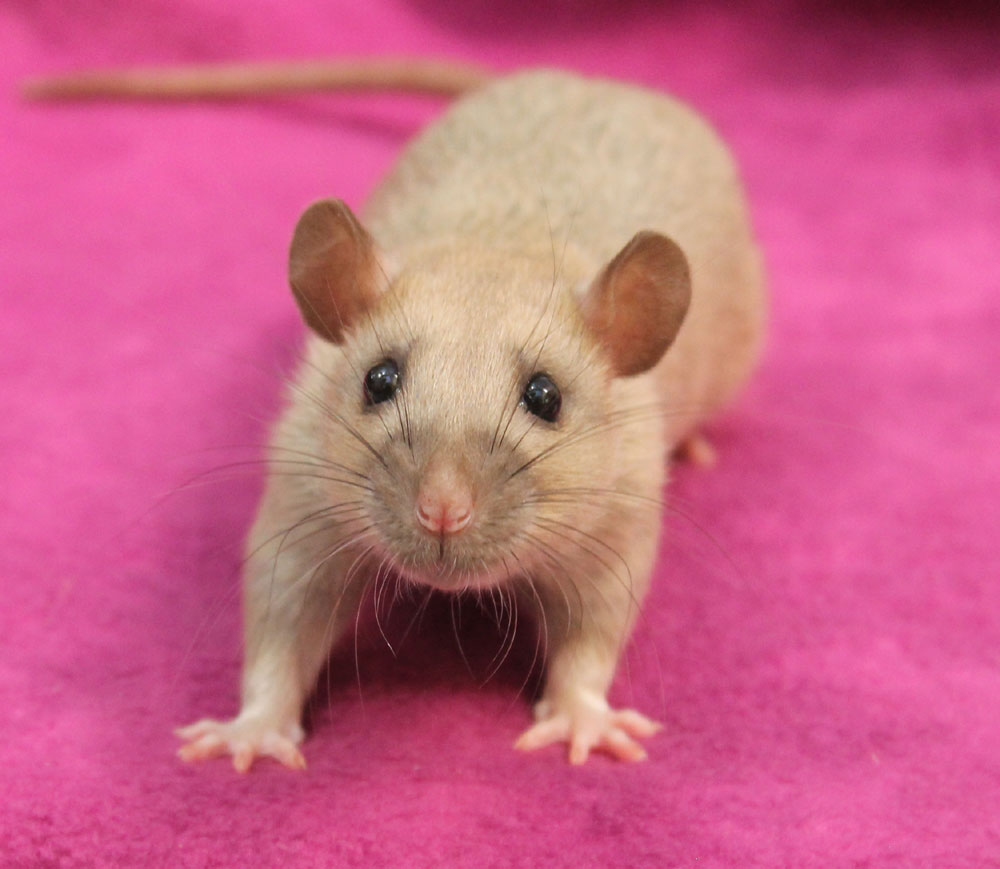 |
April 2019 - a mating between Zephyr Noddy Holder (F3, havana agouti silvermane dumbo) and Zephyr Suzi Quatro (F3, very pale american mink silvermane).
10 kittens - 6 silvermanes. This litter included a buff and a topaz, but since Suzi is too pale to just be american mink carrying RED whilst her eyes are not light enough to be havana, I conclude her 'milky tea' colour is likely to be made up of american mink + dominant chocolate + one copy of RED. Since this combination does not work as a havana, I believe Noddy is recessive chocolate based as per my normal havana line.
Full picture history can be found on the litter page here, here is my american cinnamon silvermane keeper (Morrissey) at 8 weeks under cloud and sun, along with a dilute topaz silvermane which is a very pretty apricot colour, and the three bucks showing how nicely silvered they all are.
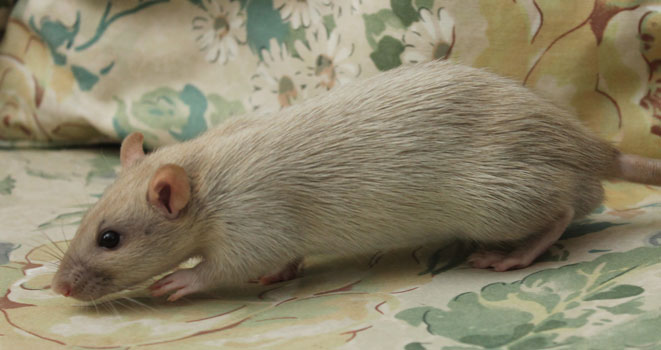 |
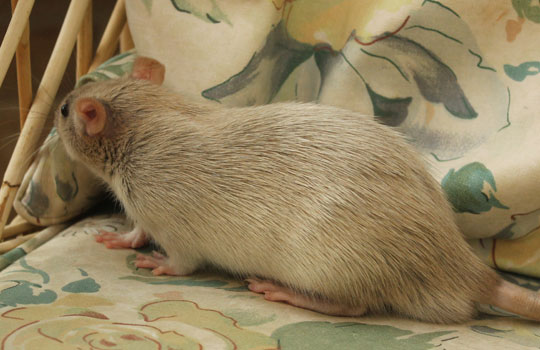 |
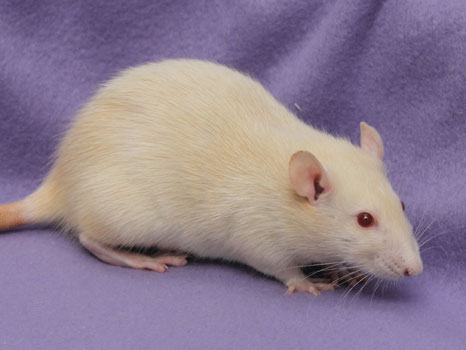 |
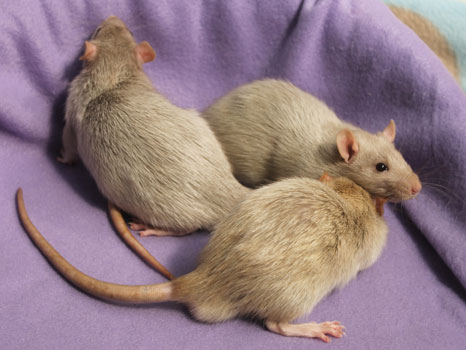 |
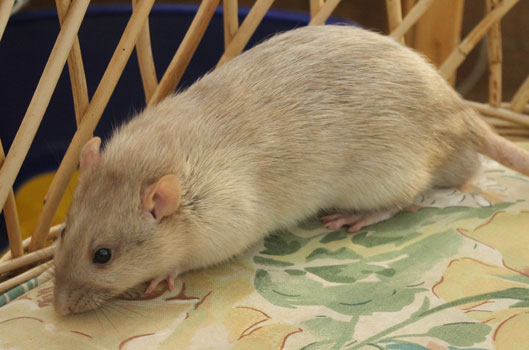 |
August 2019 - Zephyr Jennifer Eckles (F4, mottled chocolate/buff silvermane) with Zephyr Mushroom (F2, black silvermane, not owned by Zephyr) as a test litter for mottling. No mottled babies from this litter, so the conclusion is that Freckles is a mosaic as a result of somatic mutation, and therefore not an inheritable trait. Their litter page is here.
August 2019 - Zephyr Annie Lennox (F4, agouti silvermane) with Nimbus Sunny (F2, pale dominant chocolate american mink silvermane dumbo, not owned by Zephyr) for the non dominant chocolate line. This litter included a good silvermane buck kitten who I kept even though he was a chocolate self (Gary Barlow), and a nicely silvered black silvermane doe who I kept (Scary Spice). Their litter page is here, and these are Gary and Scary.
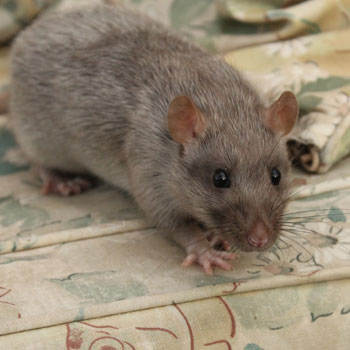 |
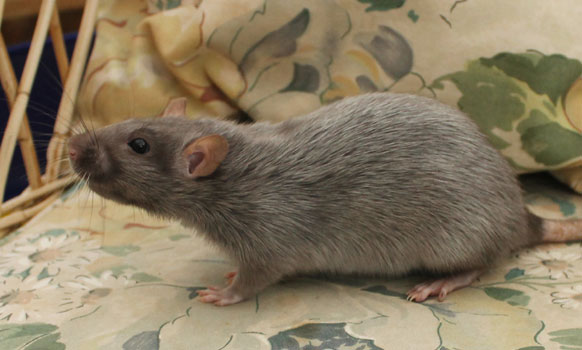 |
Autumn 2019 - Zephyr Blondie (F4, chocolate agouti silvermane) with Zephyr Al Capone (black from my american line) to broaden the gene pool. My first litter for a while with only one silvermane parent, and there were only 3 silvermanes in the litter, and all were chocolate selfs. I kept the best doe post moulting, who again happened to be the worst beforehand (Posh Spice), and homed the american mink buck who had very nice silvering where I'll be able to borrow him back if needed. Their litter page is here, and this is the american mink buck.
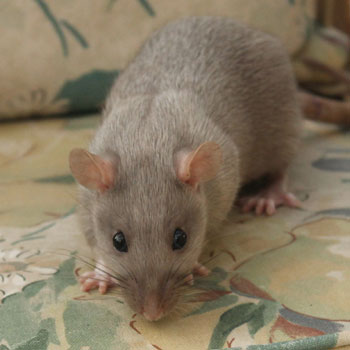 |
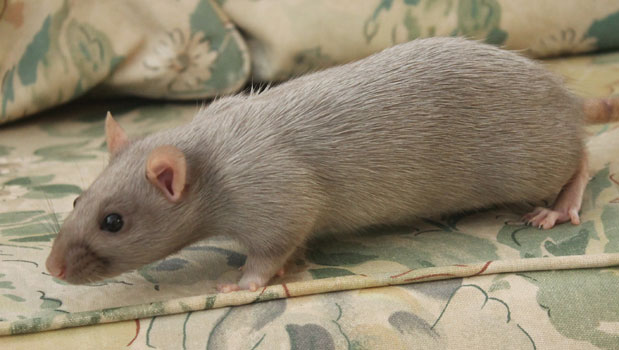 |
Provisional Standard
In February 2020, the variety was granted this standard by the NFRS, and will now be able to be shown in the provisional standard class under the name 'Silken':
"The coat on this variety should be long, fine, silky and held flat all over the body including the belly, although the fur here and on the head will obviously be shorter. Each hair to be translucent for approximately 2/3rds of it's length with the bottom portion corresponding to the colour of the variety. The colour of the translucent portion to be dependent on the variety; silver for selfs and pale gold for agouti types, the exact shade will vary with the variety (eg agoutis will be darker than cinnamons). The undercolour, muzzle and around the eyes should correspond to the colour variety. The translucent coat is usually fully developed by ten to twelve weeks and should remain in the adult.
(These shall not be shown in pink eyed varieties, rex, pointed or pale coated varieties - exact list to be discussed.)"
Now that my line is fairly well established, and there is a standard to work to, I will close this development page, but a summary of my aims for this line will be included on my main page for breeding objectives.
To round up this project:
- selection of my keepers will be as late as possible after the kitten moult to allow the best individuals to become apparent
- most matings will be between two silkens, except when I feel an outcross is required
- I anticipate that my preferred varieties will still be agouti, chocolate agouti, and american cinnamon, but I may also keep well silvered examples of the equivalent selfs
Please note that colours given are best guesses, given that the line has two types of chocolate in it which are not always easy to distinguish, and the interaction between them, and between dominant chocolate and other genes, has not been investigated yet.